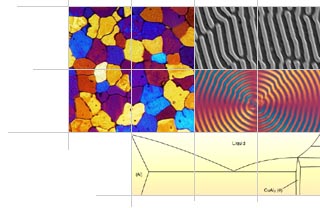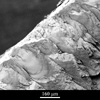Micrograph Library
Browse the libraryAdvanced searchSystemsCompositionsTechniquesKeywordsPhase diagramsHelpPreferencesAbout the micrograph libraryTerms of useContribute micrographs!FeedbackLinksCredits Print this page

Full Record for Micrograph 586

[123 KB]
View micrograph
.. in new window
View micrograph and record
.. in new window
You can also view and download the micrographs on Flickr
- Micrograph no
- 586
- Brief description
- Fracture surface in polystyrene
- Keywords
- beach marks
 , fracture
, fracture  , polymer
, polymer  , polystyrene (PS)
, polystyrene (PS) - Categories
- Fracture, Polymer
- System
- Polystyrene (PS)
- Composition
- Not specified
- Standard codes
- Reaction
- Processing
- Applications
- Polystyrene is hard and inexpensive and its use is very widespread. CD cases and clear plastic cups are common examples. Domestic appliance casings are also typically made from PS
- Sample preparation
- The surface has been sputter-coated with gold, to give a conducting surface
- Technique
- Scanning electron microscopy (SEM)
- Length bar
- 160 μm
- Further information
- The fracture surfaces are generally very sharp and angular, indicating fast, brittle fracture with little ductile tearing. Parabolic 'beach marks', can be seen where the fracture has grown at a speed comparable to the speed of sound in the material (and has thus been periodically arrested) and indicate the direction in which the fracture has occurred. In places, there is evidence of ductile tearing, and also a finely fibrous surface which is the remnant of crazes. There is also some evidence of the crack splitting as it progresses.
- Contributor
- J A Curran
- Organisation
- Department of Materials Science and Metallurgy, University of Cambridge
- Date
- 03/10/02
- Licence for re-use
 Attribution-NonCommercial-ShareAlike 4.0 International
Attribution-NonCommercial-ShareAlike 4.0 International- Related micrographs

